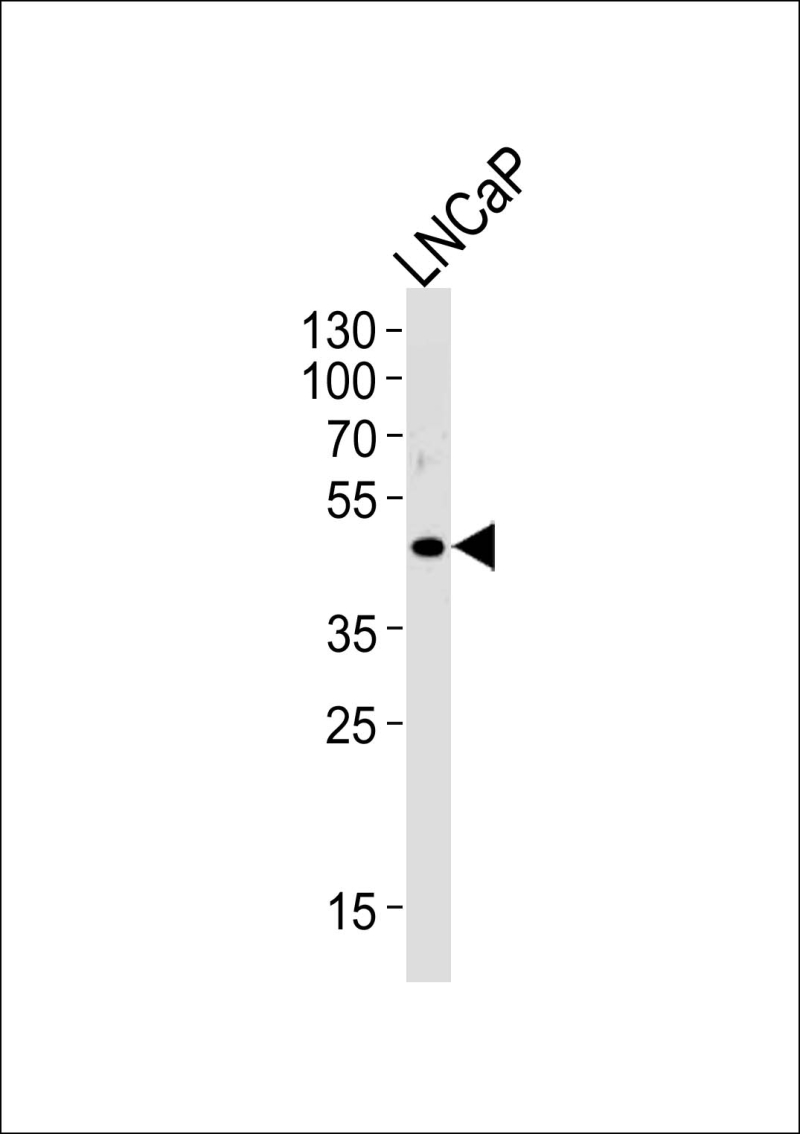
| WB | 1/1000 | Human,Mouse,Rat |
| IF | 咨询技术 | Human,Mouse,Rat |
| IHC | 咨询技术 | Human,Mouse,Rat |
| ICC | 技术咨询 | Human,Mouse,Rat |
| FCM | 咨询技术 | Human,Mouse,Rat |
| Elisa | 咨询技术 | Human,Mouse,Rat |
| Aliases | Olfactory receptor 51E1, D-GPCR, G-protein coupled receptor 164, Olfactory receptor 52A3, Prostate-overexpressed G protein-coupled receptor, Prostate-specific G protein-coupled receptor 2, OR51E1, GPR164, OR51E1P, OR52A3P, POGR, PSGR2 |
| Entrez GeneID | 143503 |
| WB Predicted band size | 35.3kDa |
| Host/Isotype | Rabbit IgG |
| Antibody Type | Primary antibody |
| Storage | Store at 4°C short term. Aliquot and store at -20°C long term. Avoid freeze/thaw cycles. |
| Species Reactivity | Human |
| Immunogen | This OR51E1 antibody is generated from rabbits immunized with a KLH conjugated synthetic peptide between 280-309 amino acids from the C-terminal region of human OR51E1. |
| Formulation | Purified antibody in PBS with 0.05% sodium azide. |
+ +
以下是关于OR51E1抗体的3篇参考文献及其摘要概括(注:文献信息为示例性整理,具体引用请核实原文):
---
1. **文献名称**:*OR51E1 as a novel tissue-specific biomarker for prostate cancer detection*
**作者**:Gaudin, S. et al.
**摘要**:研究通过免疫组化分析,证实OR51E1在前列腺癌细胞中特异性高表达,并开发了高特异性单克隆抗体,提出其作为前列腺癌诊断标志物的潜力。
2. **文献名称**:*OR51E1 modulates tumor microenvironment via chemokine signaling in colorectal cancer*
**作者**:Li, J. et al.
**摘要**:利用OR51E1抗体进行组织染色及体外实验,发现OR51E1通过调控趋化因子分泌影响肿瘤微环境中免疫细胞浸润,可能成为免疫治疗新靶点。
3. **文献名称**:*Development and validation of a polyclonal antibody against human OR51E1 for functional studies*
**作者**:Müller, K. et al.
**摘要**:报道了一种兔源多克隆抗体的制备方法,通过Western blot和免疫荧光验证其特异性,并应用于OR51E1在嗅觉神经元及前列腺组织中的定位研究。
---
如需具体文献,建议通过PubMed或Google Scholar以“OR51E1 antibody”、“OR51E1 biomarker”等关键词检索近年研究。
The OR51E1 antibody is a tool designed to target the olfactory receptor 51E1 (OR51E1), a member of the G protein-coupled receptor (GPCR) superfamily. OR51E1. initially identified as an olfactory receptor due to its structural homology with odorant receptors, is expressed not only in olfactory sensory neurons but also in non-olfactory tissues, including the prostate, colon, and certain cancers. Its ectopic expression in tumors, such as prostate cancer and colorectal cancer, has drawn interest in its potential role in oncogenesis, metastasis, or as a biomarker.
OR51E1 antibodies are typically developed to study the receptor’s localization, expression levels, and functional interactions. These antibodies are validated for applications like immunohistochemistry (IHC), Western blotting, and immunofluorescence. Specificity is critical, as OR51E1 shares conserved regions with other olfactory receptors. High-quality antibodies often target unique extracellular or intracellular epitopes to ensure accurate detection.
Research using OR51E1 antibodies has revealed its involvement in cellular processes like proliferation and apoptosis, suggesting therapeutic or diagnostic relevance. For instance, in prostate cancer, OR51E1 overexpression correlates with disease progression. Such findings underscore the antibody’s utility in both basic research and clinical investigations, bridging olfactory biology and cancer biology. Validation steps, including knockout controls and cross-reactivity assays, are essential to confirm antibody reliability in diverse experimental models.
×